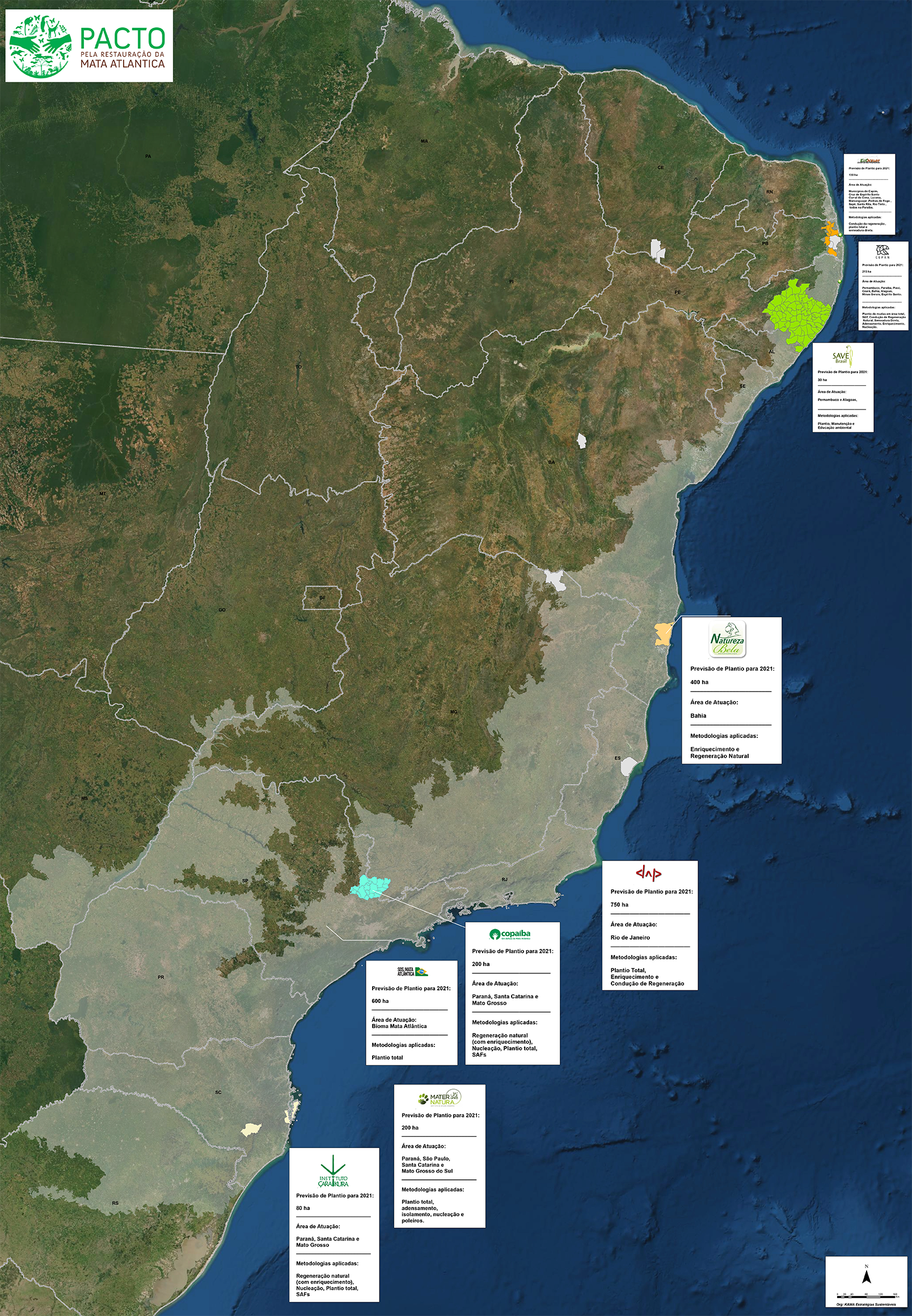Atlantic Forest Restoration Pact (PACTO)
Location
Atlantic Forest of Brazil
Category
Hub
Ecosystems
Subtropical/tropical lowland
Contact
Ludmila Pugliese
Website
https://www.facebook.com/homepactomatlantica
https://www.instagram.com/pactomataatlantica/?hl=pt-br
The Atlantic Forest Restoration Pact (AFRP; also known as PACTO, in Portuguese) aims to restore 15 million hectares of degraded lands (30% of the fragmented and highly endangered Brazilian Atlantic Forest biome) by 2050. This is a 12-year-old grassroots coalition of more than 300 public and private organizations and institutions, along with a highly motivated and collaborative scientific community and legislators that work directly with landowners, workers' cooperatives, Indigenous communities, Brazilian state governments, and private corporations with a national footprint.
AFPR works in partnership with 16 Decentralized Units (DUs) to undertake restoration projects in diverse regions of the Atlantic Forest Biome, focusing on biodiversity, water supply, connectivity, and other restoration objectives. The biophysical and socio-economic contexts vary among the DUs, and thus there are many different native ecosystems and biotic communities, governance structures, and best practice standards and appropriate restoration methodologies for each.
AFPR provides a successful model and a series of reference documents and tools developed by working groups, a detailed but flexible protocol for establishment of restoration projects based on native tree plantings, and a shared on-line monitoring and evaluation geodatabase, all of which have evolved through co-creation and fine-tuning among its members. These tools have already inspired restoration networks working in other forest biomes in Brazil, including the Amazon and the Cerrado. They are also being adapted and tested in other megadiversity countries in Latin America, where it is necessary to simultaneously address nature conservation objectives, contribute to climate change mitigation, and also create environmentally equable and sustainable jobs and livelihoods.

